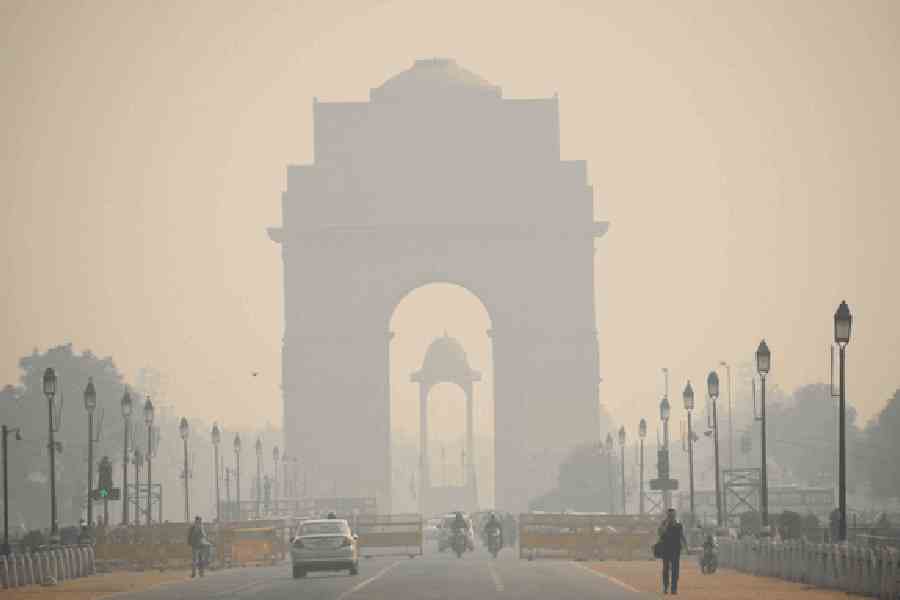The Central government on Friday deferred the implementation of stricter measures in Delhi-NCR under the air pollution control plan, saying some curbs were put in place just a day earlier, and the air quality index in the region is already showing a declining trend.
Delhi's 24-hour average air quality index stood at 468 on Friday which falls in the "severe plus" category, a stage at which all emergency measures, including a ban on polluting trucks, commercial four-wheelers, and all types of construction, are mandated to be initiated and enforced in the National Capital Region.
These measures constitute the final stage of the Graded Response Action Plan and should ideally be activated at least three days prior to the AQI surpassing the 450-mark in the capital, as outlined in a policy document prepared by the Commission for Air Quality Management (CAQM).
However, during a review meeting, the CAQM decided to monitor the air pollution situation for a day or more before implementing stricter curbs.
It said curbs under Stage III of the pollution control plan were implemented only a day ago; and it's reasonable to allow time to have their full impact on AQI in the region, according to an update shared in the evening.
"Delhi’s average AQI is already showing a declining trend since afternoon. At 12 noon, the average AQI clocked 475 which improved to 468 at 4 pm and further to 456 at 5PM," it said.
Under the final stage (Stage IV) of GRAP, only CNG, electric, and BS VI-compliant vehicles from other states are allowed to enter Delhi, with exemptions granted to those involved in essential services. It also includes work-from-home directives for 50 percent of staff in government and private offices.
GRAP IV also recommends banning all medium and heavy goods vehicles not engaged in essential services in the capital.
On Thursday, the pollution control body ordered a ban on non-essential construction work and specific categories of polluting vehicles.
The Delhi government has also announced the closure of all primary schools for two days in an effort to safeguard young children from the health-threatening pollution.
The city's AQI skyrocketed from 351 at 10 am on Thursday to 475 at 12 noon on Friday, reflecting a sudden increase in pollution levels due to highly unfavourable meteorological conditions and a sharp rise in stubble burning incidents in neighbouring states.
Delhi's 24-hour average AQI, recorded at 4 pm every day, was 392 on Thursday, 364 on Wednesday, 359 on Tuesday, 347 on Monday, 325 on Sunday, 304 on Saturday, and 261 on Friday. These numbers indicate a gradual deterioration in Delhi's air quality over the past few days, culminating in a descent into the severe category on Thursday.
The air crisis is not confined to Delhi alone; several cities in neighboring Haryana, Rajasthan, and Uttar Pradesh have also reported hazardous air quality.
The hazardous pollution levels compelled many to forgo their morning walks, sports, and other outdoor activities.
Sanjay Kabir, a Delhi-based journalist, said he has been avoiding morning and evening walks, choosing to stay indoors instead.
The count of masked faces continued to rise as the city remained enveloped in a pungent haze for the fourth consecutive day.
Delhi is impatiently hoping for favourable meteorological conditions to blow away the toxic air as health experts said the hazardous air pollution has become a serious health concern for about 2 crore residents.
Intake of every 22 micrograms per cubic meter of polluted air is equivalent to smoking a cigarette, doctors say.
Except for the headline, this story has not been edited by The Telegraph Online staff and has been published from a syndicated feed.











